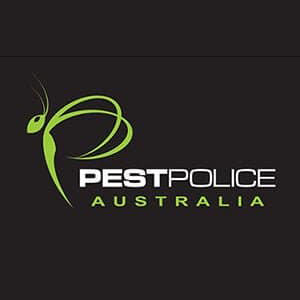It’s no secret that pests abound in Australia with the sole intention of making our lives more challenging. And among the pesky insects that can destroy your precious furniture or, worse yet, seriously harm the structural integrity of your home are those that devour wood.
It is important to take seriously the need to identify a wood borer infestation. After all, you wouldn’t want your floor to collapse or for you to lose your priceless dresser, right?
In any case, you’re in the right place! This post will discuss what this pest is, how to identify the various species of wood borers, the harm they inflict, and how to deal with an infestation.
Therefore, without further ado, let’s begin.
A Closer Look at This Wood-Boring Pests
Wood borers are a type of beetle that spends most of its life eating and burrowing through the wood. In Australia, there are many distinct types of wood-boring beetles, some of which are more of a nuisance than others, and some can be very destructive.
The life cycle of a wood borer begins when a female beetle lays eggs, typically on the surface or within the wood itself, such as in cracks or old borer tunnels. As soon as the larvae hatch, they swiftly burrow into the wood. There, they spend their time chewing on the wood and digging tunnels. Unfortunately, this stage of a wood borer’s life is the most devastating and can endure for years.
When the larvae develop into beetles and are prepared to leave the wood, they dig an exit hole on the surface and fly away. Most of the time, this will be the first time you even notice their presence. Unfortunately, it’s frequently too late by this time, and the wood is already damaged.
While older homes’ wooden structures and antique furniture are often the victims, each wood-boring beetle species is distinct and has a different preferred diet. It means that you will see a specific wood borer species attacking only particular types of wood.
Difference Between Termites and Wood Borers
It’s simple to confuse termites and wood borers if all you see is a piece of wood covered in holes, and you need to know the difference between them. Termites and wood-boring insects love to munch on wooden furnishings and structures of our homes. However, they are not related in any way (apart from their food choice).
Wood borers are beetles, as we stated previously, and they cause damage when they are in their larval stage.
On the other hand, termites are small, ant-like insects. They have delicate bodies and are virtually white. Despite being mistakenly referred to as “white ants” because of their appearance, they are more closely related to cockroaches.
As opposed to wood-boring beetles, termites typically construct their nests outside people’s dwellings. They also require favourable soil conditions and an accessible place of entry in order to attack a structure.
How to Identify Wood Borers?
As we have mentioned, you likely will only detect a woodworm infestation once the worms have developed into beetles and fled the wood. Knowing about wood borer identification can help you locate the source of infestation if you notice a few beetles in your house (especially if you’ve noticed holes in your furniture). Additionally, it would be best to identify the infestation’s origin quickly because you can save the wood if you do.
Without further ado, here is how to identify wood borers in your home:
Common Furniture Beetle
The common furniture beetle is the most prevalent type of borer in Australia. It is brown and oval and ranges from 2.7 to 4.5 mm. After it has matured and is ready to leave the furniture, it creates 1 – 2 mm wide exit holes.
Common furniture beetles enjoy softwood like pine, but as they aren’t picky eaters, they could also attack hardwood. They commonly thrive in damp environments like cellars and wooden floors.
Queensland Pine Beetle
An adult Queensland pine beetle, which is native to southeast Queensland, is 1.5 mm wide and 3 mm long. It has a round, reddish-brown exterior that is shiny and hairy. Their exit openings are 2 mm in diameter, and their legs are tightly folded against their bodies.
This kind of wood-boring beetle mainly attacks the sapwood of hoop pine trees and wooden building structures, including walls, floors, and furniture. Old homes and other wooden structures sustain substantial harm from Queensland pine beetles because they keep infesting them until they are destroyed.
Powderpost Beetle
Powderpost beetles have the potential to eventually transform infested wood into powder, as their name suggests. The adult size of this wood-boring beetle is 3 to 19 mm, and the diameter of its exit holes is 0.8 to 3.2 mm. They mainly target hard and soft wood with high starch content. Although they frequently attack timber items like flooring, furniture, tools, decorative items, etc., they rarely cause severe structural damage.
European House Borer
This wood-boring pest is sometimes known as a longhorn beetle or an old house borer. Its size ranges from 8 to 20 mm, and the exit holes it leaves behind are 6 to 10 mm broad when it goes. Due to its fur, this beetle appears grey, but it is actually either black or brown. Their antennae and legs might occasionally be reddish. They enjoy eating fir, softwood, spruce, and pine sapwood.
Due to their liking of high resin content, they frequently target newer homes, but they also attack older homes, and the damage there is significantly worse than that of newer homes.
Lesser Auger Beetle
This beetle, notorious for being difficult to identify and a significant annoyance to owners, enjoys munching on wood with a high starch and sapwood content, whether it be a house or a piece of furniture. Its long, cylindrical body is 6 to 13 mm long and 2 to 3.5 mm in width. They are brown-black or reddish-brown, with a shiny exterior.
How to Identify Borer Damage?
Learning how to identify borer damage would be the next logical step after identifying types of borer. Unfortunately, these signs only become apparent after the larvae have already destroyed your wooden items.
- Exit Holes – You will detect newly formed oval or round holes on the surface of the infected furniture if you have a recent or continuous infestation in your home.
- Frass – Borer dust, commonly referred to as frass, results from larvae continuously gnawing on your wood. However, you would only see the frass once the beetle had already left, taking it with them.
- Crumbling and Damaged Furniture – The corners would deteriorate due to borer infestations in wooden furniture and dwelling buildings. Therefore, you should have your home inspected for a borer infestation if you discover that your wooden furniture is breaking suddenly.
- Damaged Floorboards – If borer-infested, your flooring and timber floorboards would feel and appear spongy, fragile, and damaged.
There are other indications that an infestation has occurred. However, they are less frequent or more elusive. Which are:
- Tunnels – Galleries are another name for the tunnels that borers create. They are hard to see, though, and you probably won’t see them until you open the item first.
- Beetle Eggs – The eggs are typically quite difficult to notice with the naked eye. If you think there might be an infestation, you should use a magnifying lens to examine the wood more closely.
- Adult Beetles – Although uncommon, you might see one or two live adult beetles wandering around your house or dead ones near the infested wood, doors, or windows.
- Larva – You will rarely find wood borer larvae in your home because they spend the entirety of their larval development within the wood. However, if you want to keep a lookout in case one escapes, most of them are round, curved, and white or cream in colour.
How to Deal With Wood Borer Infestation
If a wood borer infestation is allowed to persist, severe structural damage could happen. You’ll want to deal with it as soon as possible, so here’s how to get rid of borers.
Determine the Type of Infestation
Effective treatment depends on accurate identification. Identifying whether the infestation is active or not is the first step. To achieve this, keep an eye out for wood powder close to the infected items. If the powder is white and doesn’t clump together, there might still be larvae. However, clumpy, yellow powder shows that the larvae have grown up and moved away from the infected items.
Choose the Right Type of Treatment
If the infestation is persistent, you will need to treat the infected item and use insecticide if you are dealing with adult beetles. You will need to replace the contaminated object or properly seal it if the infection is not active.
If the furniture is yours, you can choose whether or not to get rid of it. Infected housing structures should be evaluated for significant damage and replaced to ensure the safety of your loved ones.
Seek Help From Pest Control Specialist
Seek help from a pest control specialist if you are unsure of your findings, the species you are dealing with or if you want to avoid experimenting with insecticides or other potent poisons. A qualified specialist, such as Pest Police Australia, has the necessary training, expertise, and tools to help you eliminate borer infestation in your home.
Book a timely pest control and inspection for a prompt, efficient, reliable service, incorporating only environmentally friendly products and solutions. Get in touch with us for the best pest control, pest inspection, and removal services across Melbourne. We’re as easy to reach as we are to deal with! Either complete the online Enquiry Form or call us on 1800 737 876.

